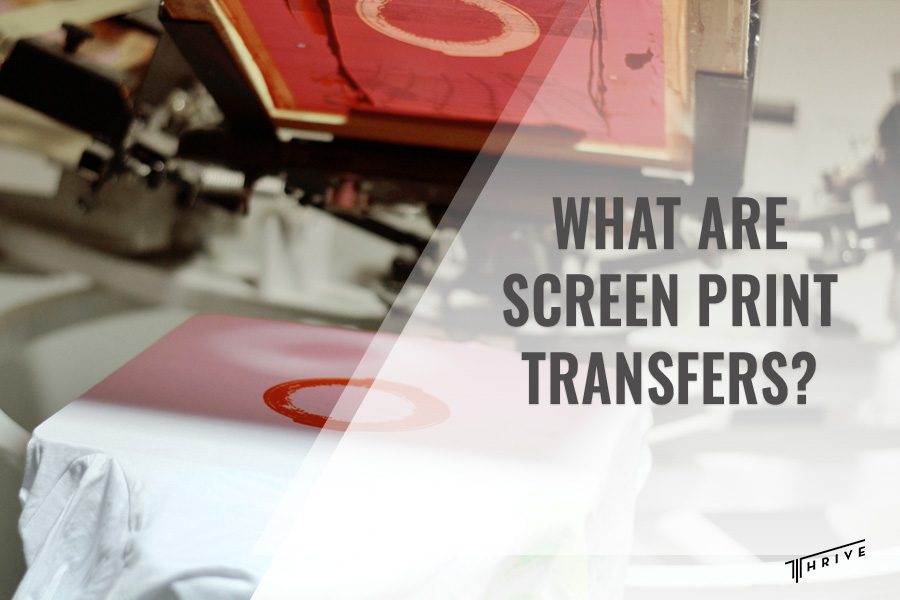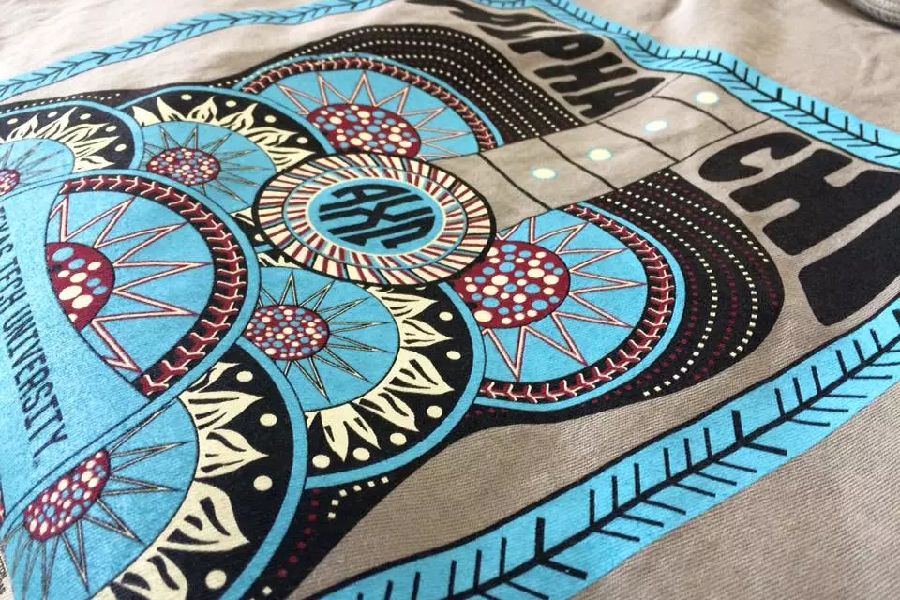
Small business owners or event organizers understand the importance of creating high-quality designs for their apparel. However, many don’t want to invest in expensive options like screen print transfer. But what are screen print transfers?
Screen printing has been around for a very long time. The first screen-printed projects onto fabric date back to 1,800 years ago in China. Yet, screen print transfers are relatively newer and modern inventions and weren’t invented until the 1960s.
Let’s discover more!
What Are Screen Print Transfers?
We consider textiles as excellent materials to experiment with because every design can look different and unique. In addition to apparel, our research and development team finds screen prints compatible with various materials.
Screen-printed transfers are screen prints done on release paper. When hot, we transfer the ink to the textile, plastic, or non-woven fabric. We apply the transfer with a heat press to maintain the correct temperature for the transfer.
Due to their high levels of elasticity, screen print transfers allow us to apply them to various products. They work on both light and dark fabrics and are known as a contemporary branding technique easily adaptable to T-shirts, luggage, socks, and similar products.
So, do you need special ink for screen print transfers? Compared to direct screen printing on apparel, screen print transfers are printed on transfer paper using plastisol ink. The release paper lets the plastisol ink peel off the transfer and stick to the fabric.
How Are Screen Print Transfers Made?
You might also be wondering “How do I print my own heat transfers?” Although this process is straightforward, you or businesses may need the help of our screen printing services if they want to order products in bulk.
Our company works with various companies, individuals, and organizations. We also serve independent and national retailers throughout North America. Plus, we specialize in providing the best contract screen printer for printing transfers for clients needing screen-printed apparel.
We make our screen print transfers using the best equipment, materials, and techniques to reveal a beautiful design once we peel off the image from the garment. Here is an overview of our production process explained step-by-step:
Tools
Our professional printing service creates multiple projects for businesses and organizations. But if you are wondering, “How do I make my own screen print transfers?”, we are here to tell you what supplies you will need for these projects.
We use standard screen printing equipment such as a screen printing press and heat press. To create high-quality projects, we use mesh screens and dual-edge scoop coaters with both a round and thin coating edge for precision. It’s also important to have transfer paper, adhesive powder, and opaque plastisol ink for screen print transfers.
Material
Screen print transfers can lock onto the surface of many types of fabric. We can apply the high heat screen print transfers to cotton and cotton/polyester blends. However, the heat press may damage the 100% polyester. This is why we don’t usually apply screen print transfers on this fabric.
When printing on paper, we consider having good screen tension as crucial. In this case, we use the screen mesh to release ink onto the transfer paper. Then, we apply medium pressure with the screen print transfer equipment to ensure it will release on the garment and it’s not too hot.
Pressing
When the print transfer is ready to be heat pressed, we double-check if the material has additional markings that may transfer on the garment. If they do, we cut them out and hold the heat press down for a few seconds until the transfer sheet is peeled back, revealing an aesthetically pleasing screen print.
Advantages of Screen Print Transfers
When you discover the advantages of screen-printed transfers, you will understand why they became so popular in the printing industry. Here is how you or your organization might benefit from these projects:
Durability
As a popular method for custom apparel printing, screen print transfers offer unmatched durability. They are usually compared to DTF transfers due to their consistent quality, longevity, and the freedom to create simple and complex designs.
Screen print transfers can endure many machine washes without fading or degrading. Using high-quality equipment, we also discovered that screen print transfers are compatible with rigid materials like umbrellas, luggage, and weatherproof apparel. Such high-density prints may require multiple coats of plastisol ink.
Precision
Screen-printed transfers allow us to focus on fine details due to their suitability for printing technical designs, photos, and multicolor projects. Our printing technique doesn’t include any transfer cutting-out. We only transfer the ink and make the edges crisp without trimming.
Cost-effective
Is your business known for doing advertising campaigns and selling promotional products? Screen print transfers are a cost-effective alternative typically tempting businesses due to the lack of additional expenses.
We take care of ink stocks, machinery maintenance, and consumables to create unique products. Thus, your business spends only when it sells, increasing the chances of making a profit and serving as a cost-effective option.
Easy transportability
There are various advantages of screen print transfers, but one of the most important ones is their easy transportability. They are perfect for offsite events and printing on demand. We can take last-minute orders and offer our clients a stress-free approach to advertising.
Versatility
We offer our clients the opportunity to create and store many printed designs for future use. We can also heat press the designs quickly when they are needed. Due to their suitability with hard-to-print materials, screen print transfers are perfect for intricate designs on caps, name tags, and individualized apparel.
Where Can You Purchase Screen Print Transfers?
The cheapest option for purchasing screen print transfers is ordering pre-made designs. They are simple to use and don’t require making your design. But if you are looking for custom and original projects, our team at Thrive Screen Printing is at your disposal.
We provide our customers the option to design their own designs to be applied to any kind of clothing they like. This way, they won’t sell the same thing as many other businesses and will stand out as an original organization in their industry.
If you can’t think of a unique design for your project, our team of creatives can help you make one. Once you are satisfied with the final results, we will heat press the design on a piece of clothing or accessory, and it will be instantly ready for promotion and advertisement purposes.
One thing to remember is that custom designs can be more expensive than pre-made screen print transfers. Since original projects are usually made to order, the processing time may be longer. Yet, you must decide if you want to invest in quality or if you prioritize quantity.

Conclusion
What are screen print transfers? They involve printing a design onto a special paper that is then transferred onto the desired surface using heat and pressure. Screen print transfers might be an efficient and cost-effective way
If you want a comprehensive service, don’t hesitate to contact us because we offer a selection of presses to meet your needs!

Robert Fisher is the founder and CEO of Thrive Screen Printing and brings extensive experience in the screen printing and fulfillment industry.

